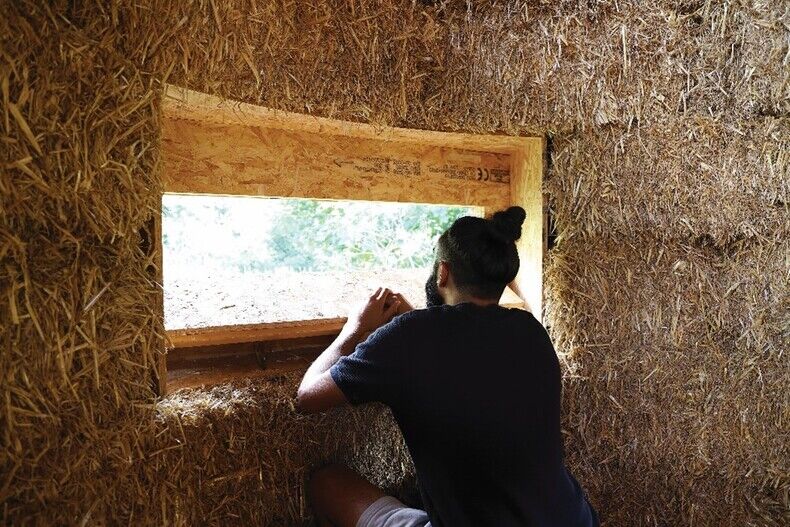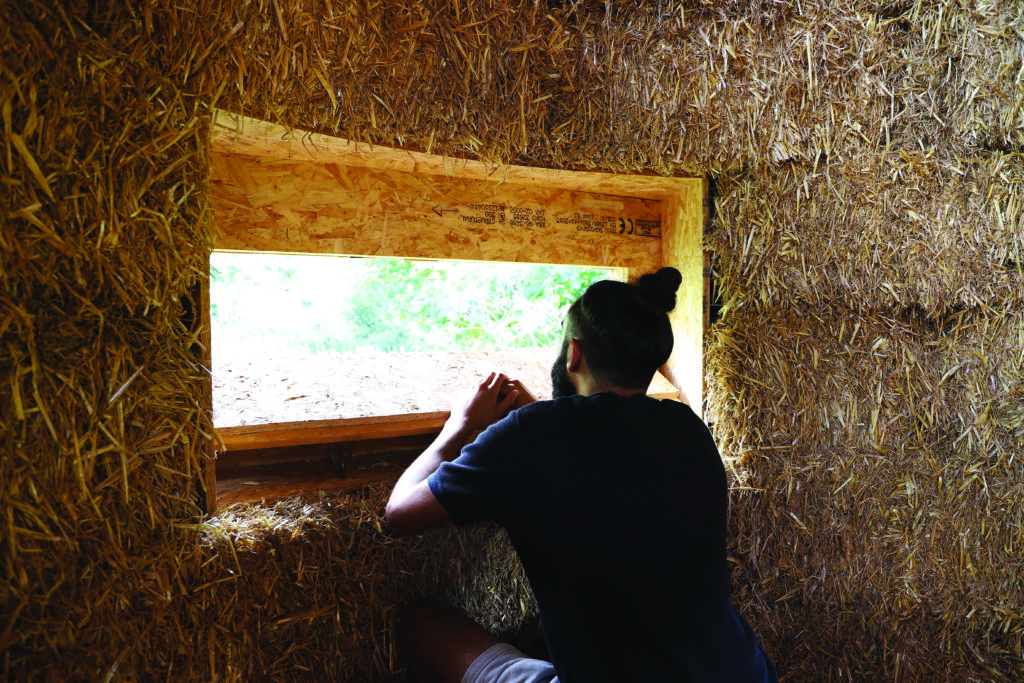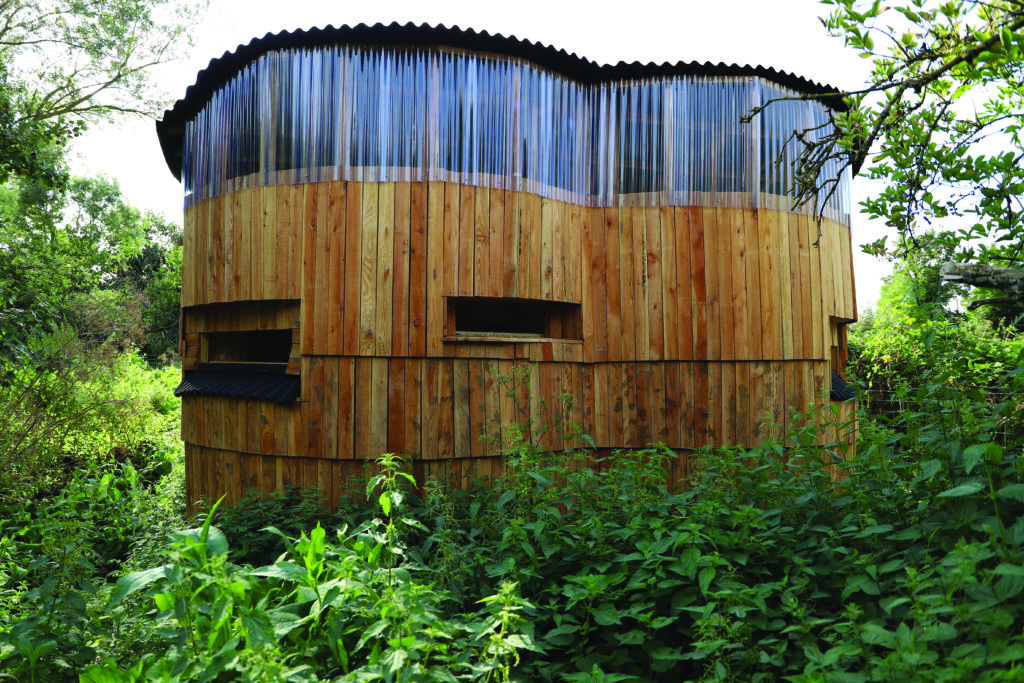Notice: Norbord is now part of West Fraser. Click here to visit westfraser.com


Student-designed hide on a local reserve proves a hit with local schoolchildren.
A nature hide designed and built by post graduate students from Kingston School of Art using straw bales and SterlingOSB Zero supplied by West Fraser, formerly known as Norbord, will help neighbourhood school children connected with local wildlife.
The project is part of the March course run by Takeshi Hayatsu, principal of Hayatsu Architects, which is involved in collaborative ecology projects with the local community. He says the idea of building the nature hide came from a visit the students made to the nearby Tolworth Moated Manor nature reserve in south west London. The visit resulted in a mini architectural design competition, which included judges from local ecology action group Citizen Zoo and community action group Community Brain. The winning design was a wooden hide based on two interconnecting vertical cylinders.
The students collectively developed the hide’s construction details. “We try to mimic the professional environment so we assigned roles to each, including project, health and safety, finance, drawing and workshop manager,” Takeshi explains.
In the final scheme, load-bearing straw-bale walls are used to form the hide’s interlinked curved walls. The bales are laid in a stretcher bond pattern to enhance stability, the bond clearly visible inside the building where the straw is left exposed.
Positioned on top of the curving straw-bale walls is a 450mm wide, figure-of-eight shaped ring beam formed by joining together curved sections of SterlingOSB Zero. The beam supports a grid of timber joists which, in turn, holds the building’s mono-pitched, transparent corrugated plastic roof in place. “The students did look at using glass as a more sustainable alternative, but time, a limited budget and Travis Perkins’ location adjacent to the college resulted in profiled plastic being selected,” laughs Takeshi.
A series of 50mm by 100mm vertical timber posts at 600mm centres circle the outside of the straw-bale walls to mechanically tie the ring beam and roof structure to the floor some 2700mm below.
OSB is key to the floor’s construction, which is formed of prefabricated cassettes assembled using a softwood frame sandwiched between a sheathing of two 18mm thick SterlingOSB Zero sheets. The cassettes are supported on a grid of 50mm by 200mm timber beams anchored to the ground by six screw piles. “The structure touches the ground lightly using ground anchor screw piles,” explains Takeshi.
The entire assembly was prefabricated at the School of Art for assembly on site. Prefabrication included assembly of window frames of West Fraser-donated SterlingOSB Zero, which are the same size as a straw bale. For Takeshi, SterlingOSB Zero added to the aesthetic of the hide. “I do very much enjoy the OSB’s surface texture resembling the texture of the straw bales”, Takeshi says.
Students assembled the hide on the nature reserve over the summer. The precise location of the windows was determined on site once the walls were in place and the best viewing positions had been established. Window openings were created by simply replacing a straw bale with a window frame.

Externally the building is clad in larch panels. These have been decorated in nature motifs by local school children using paint made from clay recovered from a local building site, linseed oil and flour.
The design is successful and the hide has proved popular with local schools. Although, with hindsight, Takeshi admits that leaving the straw bales exposed inside may have been a mistake as the children take home stalks as a souvenir of their visit.
To find out more about West Fraser’s support for architects and to access useful downloads visit the architects’ page at https://uk.westfraser.com/resources/architect-support/
For further information, call 01786 812 921 or visit https://uk.westfraser.com/



Request an A5 sample of any of our boards. Our samples come with an informative wraparound cover.
Request a sample